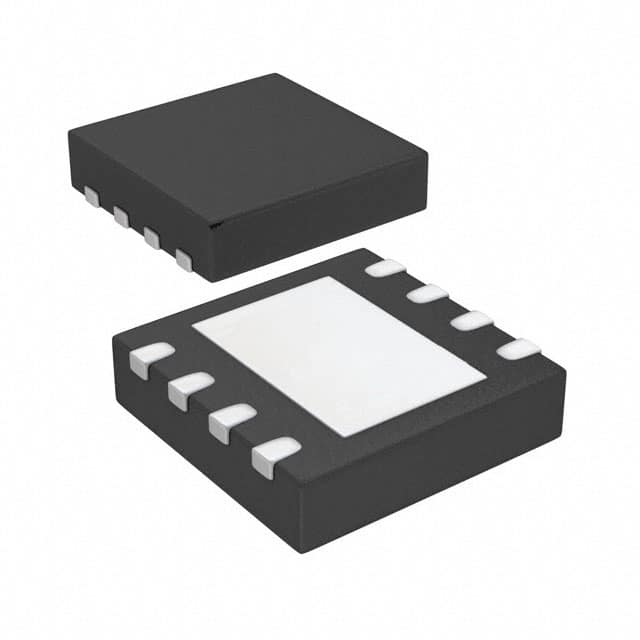Encyclopedia Entry: 93LC66CT-I/MC
Product Overview
- Category: Integrated Circuit (IC)
- Use: Non-volatile Serial EEPROM Memory
- Characteristics: Small form factor, low power consumption, high reliability
- Package: 8-pin SOIC (Small Outline Integrated Circuit)
- Essence: The 93LC66CT-I/MC is a non-volatile memory chip that can store data even when the power is turned off. It is commonly used in various electronic devices for data storage purposes.
- Packaging/Quantity: Available in tape and reel packaging with a quantity of 2500 units per reel.
Specifications
- Memory Size: 4Kbits (512 x 8 bits)
- Operating Voltage: 2.5V to 5.5V
- Operating Temperature Range: -40°C to +85°C
- Interface: SPI (Serial Peripheral Interface)
- Write Endurance: 1 Million cycles
- Data Retention: 200 years
Pin Configuration
The 93LC66CT-I/MC has an 8-pin SOIC package with the following pin configuration:
| Pin Number | Pin Name | Function | |------------|----------|----------| | 1 | CS | Chip Select | | 2 | DO | Data Output | | 3 | GND | Ground | | 4 | DI | Data Input | | 5 | CLK | Clock Input | | 6 | VCC | Power Supply | | 7 | NC | No Connection | | 8 | WP | Write Protect |
Functional Features
- Non-volatile memory: Retains data even without power supply
- Serial interface: Uses SPI for communication with other devices
- Low power consumption: Ideal for battery-powered devices
- High reliability: Built-in error detection and correction mechanisms
Advantages and Disadvantages
Advantages: - Compact size allows for integration into small electronic devices - Wide operating voltage range enables compatibility with various systems - High write endurance ensures longevity of data storage - SPI interface provides easy integration with other components
Disadvantages: - Limited memory capacity compared to other EEPROM options - Relatively higher cost per bit compared to larger memory chips - Slower write speed compared to some other memory technologies
Working Principles
The 93LC66CT-I/MC utilizes EEPROM (Electrically Erasable Programmable Read-Only Memory) technology. It stores data by electrically charging or discharging specific memory cells within the chip. The stored data can be read, modified, or erased using the SPI interface.
Detailed Application Field Plans
The 93LC66CT-I/MC is widely used in various electronic devices that require non-volatile memory for data storage. Some common application fields include: - Consumer electronics: Smartphones, tablets, digital cameras - Automotive: Engine control units, infotainment systems - Industrial automation: Programmable logic controllers, sensors - Medical devices: Patient monitoring systems, diagnostic equipment
Alternative Models
- 93LC46CT-I/MC: 2Kbits (256 x 8 bits) memory size
- 93LC86CT-I/MC: 16Kbits (2048 x 8 bits) memory size
- 93LC126CT-I/MC: 32Kbits (4096 x 8 bits) memory size
Note: These alternative models offer different memory capacities to suit varying application requirements.
In conclusion, the 93LC66CT-I/MC is a compact and reliable non-volatile serial EEPROM memory chip. Its small form factor, low power consumption, and high reliability make it suitable for a wide range of electronic devices. While it may have some limitations in terms of memory capacity and write speed, its advantages outweigh the disadvantages, making it a popular choice in the industry.
Word Count: 446 words
Senaraikan 10 soalan dan jawapan biasa yang berkaitan dengan aplikasi 93LC66CT-I/MC dalam penyelesaian teknikal
What is the 93LC66CT-I/MC used for?
- The 93LC66CT-I/MC is a serial electrically erasable programmable read-only memory (EEPROM) that is commonly used for storing small amounts of data in various technical solutions.
What is the storage capacity of the 93LC66CT-I/MC?
- The 93LC66CT-I/MC has a storage capacity of 4 kilobits, organized as 512 x 8.
What are the typical applications of the 93LC66CT-I/MC?
- Typical applications of the 93LC66CT-I/MC include storing configuration data, calibration constants, and other small amounts of non-volatile data in microcontroller-based systems.
What is the interface protocol for accessing the 93LC66CT-I/MC?
- The 93LC66CT-I/MC uses a simple 3-wire serial interface (clock, data in, and data out) for communication with microcontrollers or other digital devices.
What is the operating voltage range of the 93LC66CT-I/MC?
- The 93LC66CT-I/MC operates within a voltage range of 2.5V to 5.5V, making it compatible with a wide variety of systems.
Can the 93LC66CT-I/MC be reprogrammed?
- Yes, the 93LC66CT-I/MC supports reprogramming, allowing for flexibility in updating stored data when needed.
What are the temperature specifications for the 93LC66CT-I/MC?
- The 93LC66CT-I/MC is specified to operate over a temperature range of -40°C to +125°C, making it suitable for use in harsh environments.
Does the 93LC66CT-I/MC have built-in security features?
- The 93LC66CT-I/MC does not have advanced built-in security features, so additional measures may be required to protect sensitive data if needed.
Is the 93LC66CT-I/MC RoHS compliant?
- Yes, the 93LC66CT-I/MC is RoHS compliant, meeting environmental standards for lead-free components.
Can the 93LC66CT-I/MC be used in automotive applications?
- Yes, the 93LC66CT-I/MC is suitable for use in automotive electronics due to its wide operating temperature range and robust design.


